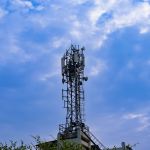News
In Part 2 of this exciting interview with ZTE’s Deputy General Manager of RAN Product Marketing, Jiang Wen, we look more closely at some of ZTE’s latest solutions and how they are changing the market for 5G
In Part 1 of our interview with Mr Jiang Wen, we discussed how the 5G landscape has changed for operators during the first two years of 5G, bringing with it new challenges and new opportunities. Here we take a deeper dive into a number of specific solutions and how they work to solve some of the major issues operators are facing around the world.
When it comes to developing innovative solutions, Mr Jiang explained that the key is leveraging real-world experience from the industry, coupled with a focus on increasing capacity and coverage while reducing costs.
“Experience comes from practice. All of the innovations mentioned in the previous article come from studying actual 5G deployments and working towards optimization,” explained Mr Jiang. “We believe these innovations could help our oversea customers to overcome their challenges and deliver quality 5G with better coverage and larger capacity at lower cost.”
Coverage, especially in an urban environment, can be a major challenge for 5G. What is ZTE doing to help operators deal with this challenge?
I’d like to talk about our SSB 1+X solution, which helps to provide optimal coverage with simplified structure, but for that we need to discuss massive MIMO first.
Massive MIMO is a core 5G technology that can improve network coverage, user experience, and network capability, but it also presents a number of challenges when it comes to deployment. For example, SSB (synchronisation signal and physical broadcast channel block) determines the basic coverage of the network. When it comes to 4G, the broadcast channel is sent with a fixed wide beam and its coverage does not change in most cases. However, 5G SSB can be configured with multiple beams (up to 8) which results in a more flexible configuration, but in turn brings more complexity. The popular SSB configuration during the initial phases of 5G deployment, which is horizontal 7-beam SSB or 8-beam SSB, guarantees horizontal coverage but may leave vertical coverage as a problem, especially in built-up central business districts.
ZTE’s innovative SSB 1+X solution achieves three-dimensional coverage through one power-boosting beam for horizontal coverage and X (either 1,2 or 3) vertical beams, narrow or wide, depending on the ever-changing of user distribution and coverage requirements, in this way, the vertical coverage can be substantially improved, benefiting network performance in the high-rise buildings. At the same time, the simplified beam configuration reduces the complexity and cost of network planning, operation, and maintenance. Compared with horizontal 8-beam solution, It can offer 30% more access capacity and 5% more service capacity when traffic load was high, and 10% less power consumption when traffic load was low.
In conclusion, ZTE SSB 1+X solution provides a new, efficient and simplified SSB planning method for overseas customer during 5G scaled deployment, which ensures the best 5G coverage and reduces the complexity of network deployment and optimization.
Similar to the challenge of vertical coverage, uplink can be a weak link of coverage when SA networking. How is ZTE tackling this issue?
As we know, Wireless communication is always a system with limited uplink coverage because the transmit power of a mobile phone is understandably much lower than that of the base station. The higher the frequency band, the higher path loss and penetration loss, which causes the more serious limitation of uplink coverage, especially in indoor scenarios. And as most low bands have been allocated to 2G/3G/4G networks or other systems, 5G spectrum mainly located in the mid-bands, such as 3.5GHz, which results in limited uplink of 5G standalone over 3.5GHz. Another challenge is that UHD video and virtual reality and augmented reality (VR and AR), which are the biggest drivers of mobile data traffic growth in the 5G era, often need much faster speed and lower latency, especially on the uplink.
To address the above problems, ZTE launched its FDD Assisted Super TDD 5G Solution (FAST) to facilitate 5G SA deployment. Combining the FDD low-band (such as 700MHz/1.8GHz/2.1GHz) and TDD mid-band (3.5GHz), our FAST solution, based on a standard-compliant carrier aggregation framework, introduces the innovative uplink time-division multiplexing scheduling which uses one transmitting channel either for FDD low band or TDD middle band, and uses the other transmitting channel exclusively for TDD middle band, in this way, the FAST solution not only improves the uplink coverage, but also is the only solution to benefit downlink and uplink capacity and the innovative solution to boost both capacity and coverage, which facilitates 5G SA deployment and its superior performance.
Moreover, the FAST solution can extend to the coordination between the TDD frequency bands, and together with flexible spectrum frame structure which could reserve more frame resource for uplink, it can achieve uplink speeds faster than 1Gbps, so as to meet the requirements of some special services, such as 8K video live streaming, and those of the vertical industries for large uplink bandwidth.
Another key challenge for operators is spectrum. As we all know, spectrum is a limited and expensive resource for operators. How is ZTE approaching the challenge of optimizing spectrum use?
Naturally, the availability of 5G spectrum is critical for operators. 5G can definitely benefit from leveraging much higher frequency bands with larger bandwidth, like band n78 or even mmWave bands. However, this is not necessarily the fastest way and/or the most cost-efficient way to deploy 5G in the initial stage on a large scale. It is therefore reasonable and sometimes optimal for 5G to utilise the sub3GHz bands which are already in use by 2G, 3G, and 4G. Spectrum re-farming from FDD bands to 5G is an obvious and easy option, but not optimal due to the light load of 5G’s initial stage.
Dynamic spectrum sharing (DSS) provides a more feasible choice, allowing the operators to activate both LTE and 5G on the same sub3GHz band. ZTE’s DSS solution provides the optimal choice for Wind Tre to achieve nationwide 5G coverage with the best cost-effectiveness and fastest speed. Commercial deployment of 5G sites has already begun, and it is expected to cover 70% users by the end of 2020. Wind Tre is expected to be the first operator in Italy to achieve national 5G coverage in the first quarter of 2021.
For most global operators, they still have 2G or 3G on the Sub3GHz band, such as 2G on 1.8GHz and 3G on 2.1GHz, although the traffic of 2G/3G is decreasing day by day, it is hard to shutdown 2G/3G networks in a short term. To ensure legacy users’ voice service experience remains unaffected, a dedicated bandwidth is required to be reserved for 2G or 3G, but this is, of course, not making the best use of spectrum. How to make full use of all available spectrum for fast 5G deployment while also maintaining legacy voice service experience in an efficient way is a challenge posed to global operators, and that’s exactly why we created our SuperDSS solution.
SuperDSS is a unique 2G/4G/5G and 3G/4G/5G DSS solution, enabling quick 5G roll-out while offering smooth transition of legacy voice service over the same carrier, maximising the spectrum’s return on investment, and the one-step NR target network configuration could simplify 5G network planning and O&M. Taking 20MHz of bandwidth in the 2.1GHz band as an example, without SuperDSS, the operator would have to allocate 5MHz for 3G to provide legacy voice service so DSS can only be performed in 15MHz of bandwidth. While with ZTE SuperDSS, 3G, 4G and 5G can share all of the 20MHz bandwidth dynamically, the NR configuration keeps 20MHz from the beginning and the 3G bandwidth can be adjusted according to service requirements, which helps operator to deploy 5G and maintain legacy UE’s voice service experience in a fast and agile way, and ensure that parameter changes during network evolution are kept to a minimum.
So, for operators, if refarming on 700MHz or 2.6GHz, DSS is recommended. But, if refarming on 1.8/2.1GHz, it is strongly recommended to deploy 2G/4G/5G or 3G/4G/5G SuperDSS, enabling 5G fast start on a wider bandwidth without impacting existing 2G/3G voice experience.
Finally, lets move to a very important issue for operators in the modern world: power consumption. Network operators are rightly under more pressure than ever before to reduce their carbon footprint and go green, but the additional network performance required by 5G will actually drive up their network’s power consumption. How can operators solve this issue?
As you say, in the 5G era operators are facing a much more complicated networks with multiple bands and multiple modes, and the new technologies such as Massive MIMO, bringing higher performance but also higher power consumption. Power saving has definitely become a key concern for the operators.
ZTE’s PowerPilot solution is the most comprehensive and effective power saving solution. On the basis of basic energy saving functions, including carrier shutdown, channel shutdown, symbol shutdown, and equipment deep sleep, PowerPilot supports a multi-dimensional and multi-granularity energy-saving strategy. By introducing AI and big data analysis, PowerPilot identifies energy-saving scenarios through coverage identification and configuration identification, matches energy-saving functions at different dimensions, and achieves cell-specific strategy. But there are still some limitations. PowerPilot with service pilot function revolutionises energy savings in ways that had never been available before, exploiting the differences in energy efficiency of various types of services to deliver certain services to the most energy-efficient network, helping achieve the most efficient energy usage without impacting on user experience. According to a model using typical network configurations, PowerPilot with service pilot function can save up to twice as much energy as existing energy saving solutions, thereby greatly reducing the OPEX for operators. PowerPilot works well in 4G, 5G NSA or SA networks, and we believe PowerPilot could help every operator to reduce cost in the 5G era.
In fact, on the 12th of November 2020, the Global Telecommunications Management Forum (TM Forum) announced the result of the Digital Transformation World Series 2020, and the PowerPilot-based “5G green telco” project initiated by China Telecom together with ZTE and other partners won the Outstanding Catalyst – Impact for Society award.
Going green will be very important not only for the industry but for the health of our planet and we look forward to helping more operators on their sustainability journey.
Also in the news:















